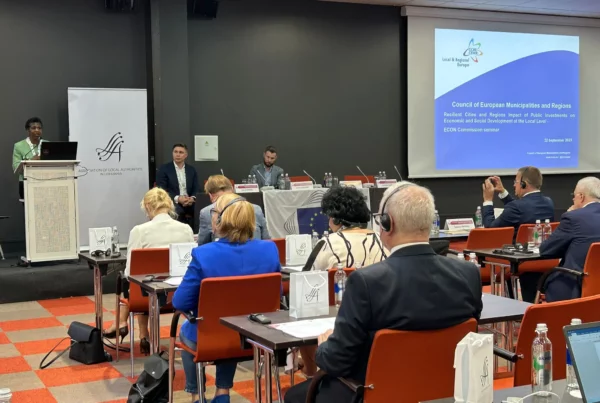Over a year into the pandemic, local governments are still missing long-term support
Local and regional finances are under pressure due to the consequences of the COVID-19 crisis: spikes in pandemic-related spending were paired with falls in revenue. More than a year after the coronavirus was declared, local and regional governments still lack long-term support from national governments.
This is revealed by the latest edition of the CEMR analysis of COVID-19’s impact on local and regional finances. The study draws on data from 18 local and regional government associations in 15 countries*, shedding light on recent trends in territorial finances.
The situation in Europe’s towns, cities and regions is critical. “The scissor effect caused major problems for many : less income coming in, more expenditure going out. Not an ideal state of affairs!” said Flo Clucas, Councillor for Cheltenham (UK) and CEMR spokesperson on local finances. “What has become clear is that national governments must work with local and regional governments if lessons learned are to be better understood and applied.”
How COVID-19 led to increases in local and regional expenses
Absolute estimates of local and regional governments’ additional expenditures in 2020 range from €5 million to €10 billion depending on the country in question.
Most of the expenses were related to social care (housing, childcare and poverty alleviation), the purchase of protective equipment and enforcement of safety measures, or additional support to local businesses, associations and cultural institutions.
The decline in income due to lockdowns severely impacted local and regional finances. This was principally due to loss of local businesses taxes and fees, but also due to the decline in tourism. However, these losses vary significantly according to countries’ local finance system – such as whether local governments depend primarily on own taxation or allocations from national taxes – and each territory’s economic profile.
What support from national governments?
National support to local governments ranged from additional transfer of resources to coverage of extra expenses (e.g., purchase of masks, protective equipment, etc.) or flexibility in procedures. According to CEMR’s survey, this represented an average of €2.9 billion in short-term support in each country. 60% of respondents declared that national support remains insufficient to compensate the budgetary deficits in the long run.
Since the real impact of the COVID-19 crisis is likely to be revealed in the medium to long term, it is crucial that central governments regularly exchange with national associations of local and regional governments to anticipate the long-term economic and social effects.
In this respect, national recovery and resilience plans represent an opportunity to boost local and regional capacities to invest and deliver on their essential mission to their citizens. This is why we at CEMR call on national governments to fully involve cities, towns and regions in the implementation and assessment of national recovery plans.
At the EU level, the assessment of local and regional involvement must be a priority in the Commission’s mid-term review of the recovery plans in 2022 if it wants to make the green and digital transitions a reality on the ground.
*Austria (GEMEINDEBUND, STAEDTEBUND), Belgium (VVSG), Czech Republic (SMOCR), Denmark (LGDK), Estonia (ELVL), Finland (Association of Finnish Local and Regional Authorities), Germany (DST, DStGB), Luxembourg (SYVICOL), Netherlands (VNG), Portugal (ANMP), Serbia (SKGO), Slovenia (ZMOS), Spain (FEMP), Sweden (SALAR/SKR), United Kingdom (LGA, COSLA), Network of Associations of Local Authorities of South East Europe (NALAS).

Advisor – Territorial Cohesion & Local Finances






